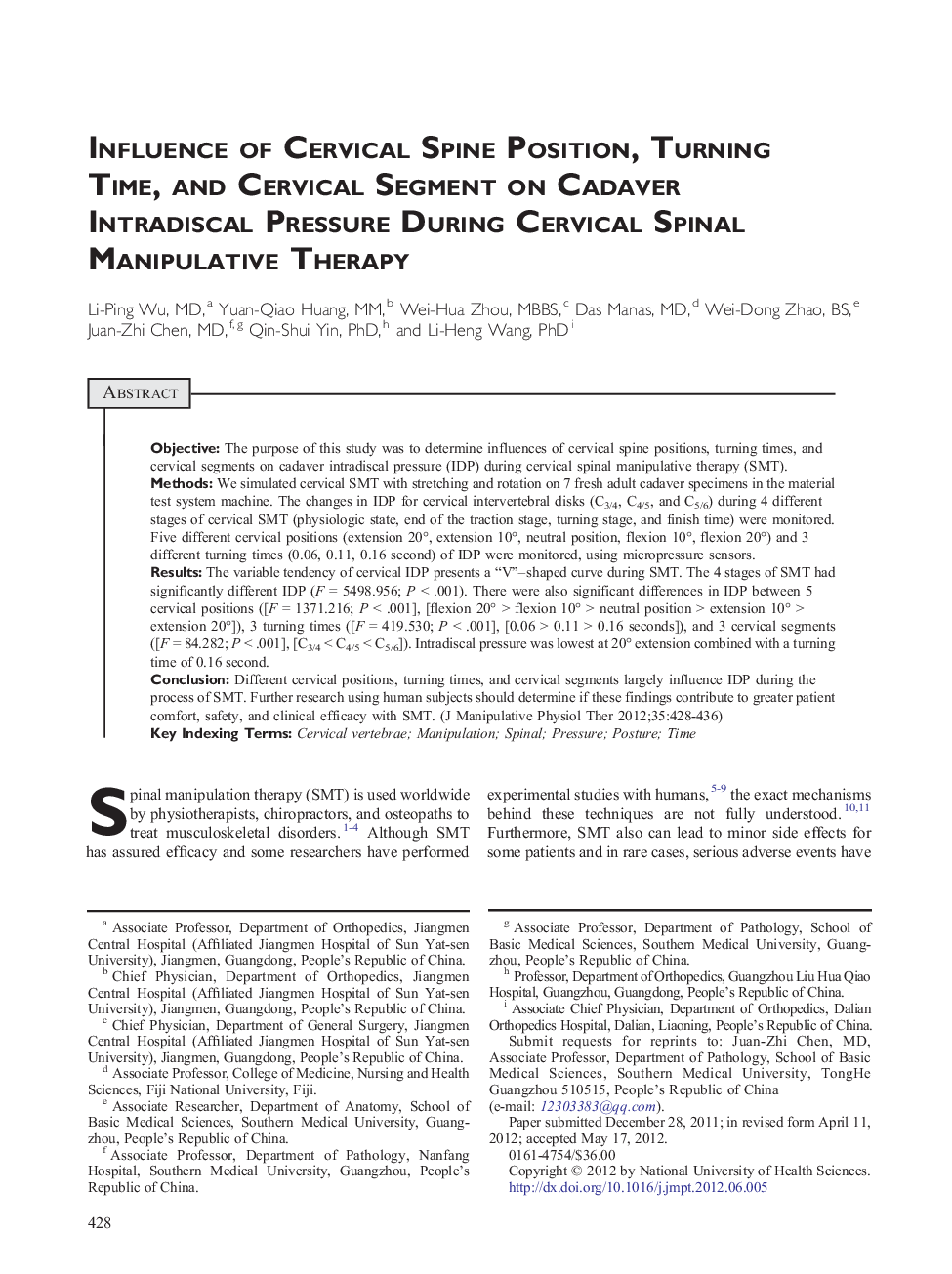| کد مقاله | کد نشریه | سال انتشار | مقاله انگلیسی | نسخه تمام متن |
|---|---|---|---|---|
| 2620928 | 1135658 | 2012 | 9 صفحه PDF | دانلود رایگان |

ObjectiveThe purpose of this study was to determine influences of cervical spine positions, turning times, and cervical segments on cadaver intradiscal pressure (IDP) during cervical spinal manipulative therapy (SMT).MethodsWe simulated cervical SMT with stretching and rotation on 7 fresh adult cadaver specimens in the material test system machine. The changes in IDP for cervical intervertebral disks (C3/4, C4/5, and C5/6) during 4 different stages of cervical SMT (physiologic state, end of the traction stage, turning stage, and finish time) were monitored. Five different cervical positions (extension 20°, extension 10°, neutral position, flexion 10°, flexion 20°) and 3 different turning times (0.06, 0.11, 0.16 second) of IDP were monitored, using micropressure sensors.ResultsThe variable tendency of cervical IDP presents a “V”–shaped curve during SMT. The 4 stages of SMT had significantly different IDP (F = 5498.956; P < .001). There were also significant differences in IDP between 5 cervical positions ([F = 1371.216; P < .001], [flexion 20° > flexion 10° > neutral position > extension 10° > extension 20°]), 3 turning times ([F = 419.530; P < .001], [0.06 > 0.11 > 0.16 seconds]), and 3 cervical segments ([F = 84.282; P < .001], [C3/4 < C4/5 < C5/6]). Intradiscal pressure was lowest at 20° extension combined with a turning time of 0.16 second.ConclusionDifferent cervical positions, turning times, and cervical segments largely influence IDP during the process of SMT. Further research using human subjects should determine if these findings contribute to greater patient comfort, safety, and clinical efficacy with SMT.
Journal: Journal of Manipulative and Physiological Therapeutics - Volume 35, Issue 6, July–August 2012, Pages 428–436